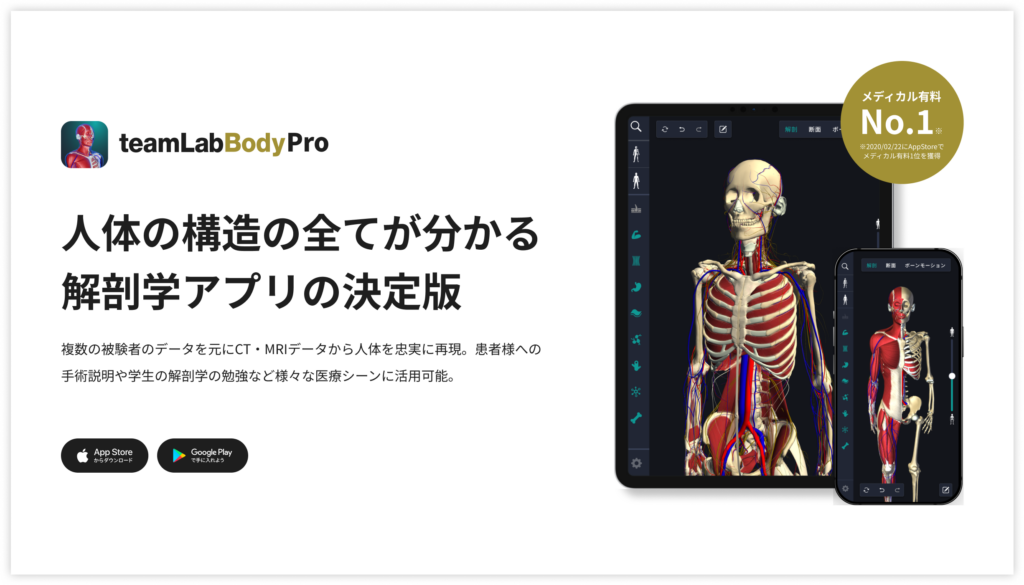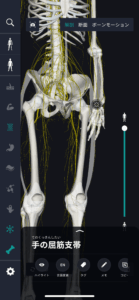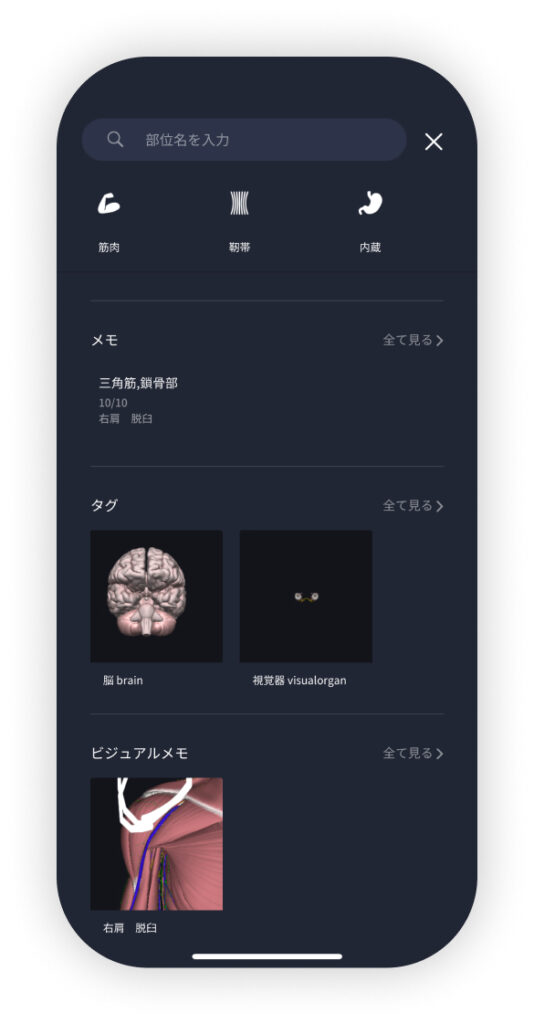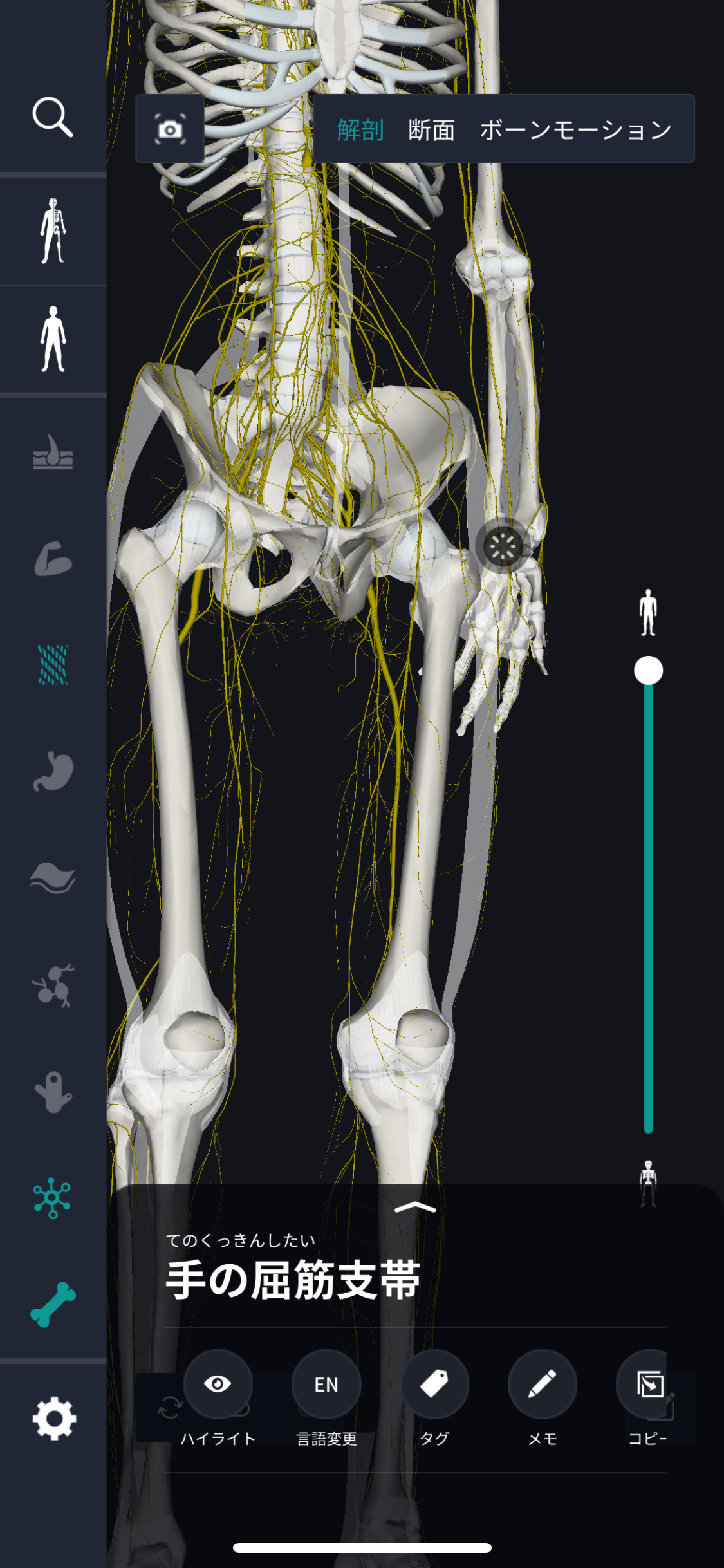beginning
In this article, I will explain effective study methods, starting with knowledge of specialized parts in human anatomy. In human anatomy, it is necessary not only to memorize the names of various organs, muscles, and bones, but also to remember where they are located in the body. Therefore, it is necessary to learn as efficiently as possible. I hope you can read this article and use the app to deepen your understanding even a little bit. Now, I'll explain the details about the “flexor brachyos of the hand” and how to study human anatomy.teamLab Body Pro Free Download
A 3D anatomy app that shows all the structures of the human body
Download teamLab Body Pro here!

What is the flexor brace of the hand?
In the anatomy application, you can view a selection of anatomy 3D models. In this model, there are various observation methods such as surfaces, cross-sections, and nervous systems. This time, I'll explain using an anatomy application.About the flexor brace of the hand

Study points
The position and structure of the flexor brace of the hand
I will explain the position and structure of the flexor brace of the hand. Location: The flexor brace of the hand is located on the inside of the wrist and crosses the palm side of the hand. This structure is located close to the carpal tunnel and plays a role in stably holding the main flexor tendon through the wrist joint. Structure: Structurally, the flexor branch consists of a thick band of connective tissue and is arranged across the wrist. This connective tissue is very strong and helps prevent friction and excessive movement of the tendon as it passes through the wrist. Important blood vessels and nerves run below the flexor brace, and play an important role in supporting hand health and function.The role and function of the flexor brace of the hand
I will explain the role and function of the flexor brace of the hand. The main role of the flexor brace is to hold the flexor muscle group of the hand firmly on the inside of the wrist. This structure stabilizes the flexor tendon in an appropriate position, and allows hands and fingers to move smoothly. The presence of a flexor brace prevents the tendon from moving excessively as it passes through the wrist, and enables efficient and controlled movement. As a function, the flexor brace supports the wrist and helps the flexor muscle group exert maximum strength. As a result, many activities using hands and fingers are supported, and various operations in daily life can be carried out smoothly. Furthermore, while maintaining wrist stability, the flexor brace also contributes to protecting blood vessels and nerves, and plays an important role in maintaining overall hand health and function.English notation for flexor brace of hand
I will explain the English notation for flexor brace of the hand. The flexor brace of the hand is called “flexor retinaculum” in English. This English name directly describes the function and location of the structure. “Flexor” means “flexor muscle” or “flexor muscle,” and indicates a group of muscles that have the function of flexing hands and fingers. Meanwhile, “retinaculum” means “brace” or “band for holding,” and refers to connective tissue for holding muscles and tendons in a fixed position. Therefore, “flexor retinaculum” is a name representing the entire band of connective tissue that has the role of holding the flexor muscle group at the wrist. This name is used to accurately identify specific structures on the inside of the wrist in an anatomical context. Also, “transverse carpal ligament” is sometimes used as a synonym, but this is more specific, showing that the brace crosses the wrist in the horizontal direction.How to study human anatomy
I will explain specific study methods using human anatomy applications.Check your past learning history and practice repeatedly
Here are the steps to check your anatomy learning history and practice iteratively effectively. 1. Check your learning history in the appReviewing your learning history with the application is an important step in effectively advancing anatomy learning. First, launch the app and go to the learning history section from the main menu. Many anatomy apps are designed to show your progress in the form of graphs and lists, so you can visually check which parts you've learned about and how much time you've spent.
By using this data, you can understand which areas you have strengths in and where you need to spend more time and effort. We also recommend using a dedicated tag or notebook function to mark areas you are particularly weak at or where you need to relearn. Regularly checking your learning history and looking back on past learning content will lead to efficient review and deepening understanding.
Use the memo function concretely





